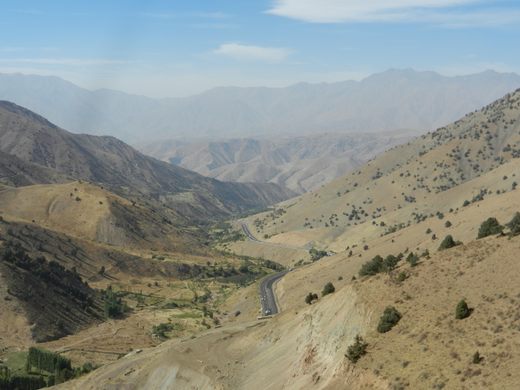A geographical territory that is completely surrounded by foreign territory, an enclave is often a place filled with political and cultural complications.
For this reason and others, most governments have avoided creating enclaves - or have avoided allowing them to exist - and there are a relatively small number today. Many of them are found in the Fergana Valley, a region in Central Asia where Taikistan, Kyrgyzstan, and Uzbekistan all meet.
Just some of the enclaves found in this region include Barak, a small Kyrgyz village surrounded by Uzbekistan; So’x and Shohimardon and the two tiny territories of Qal’acha and Khalmion, all surrounded by Kyrgyzstan; the Tajik village of Sarvan in Uzbekistan; and the Tajik village of Vorukh and the tiny piece of land known as Kairagach, both in Kyrgyzstan. Most of these are just tiny villages with small populations - most have less than 1,000 people - but they have survived because those populations consider it important to maintain their cultural heritage and insist on teaching the traditions of their ancestors.
The valley’s history stretches back more than 2,300 years, when the population settled there was first conquered by Greco-Bactrian invaders from the west. As a spot along the Northern Silk Road, this area was converted by Muslim invaders from the west before the Russian Empire took the valley at the end of the 19th century, adding it to the Soviet Union. The three regional states mentioned earlier all gained independent from the Soviet Union in 1991 and the residents have been struggling with cultural conflict ever since.
Many of the enclaves don’t even subsist using the same methods. This area is incredibly fertile and diverse, with cotton cultivation playing a large role in the local economy as well as leatherwork, stock breeding, and mining. Deposits of iron, coal, sulfur, rock-salt, napththa, gypsum, and more have been found in this area, which has also proven able to support the cultivation of various grains, fruits, and vegetables.
Community Contributors
Added by
Edited by
The Atlas Obscura Podcast is Back!

















Follow us on Twitter to get the latest on the world's hidden wonders.
Like us on Facebook to get the latest on the world's hidden wonders.
Follow us on Twitter Like us on Facebook